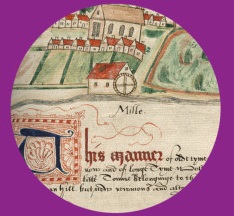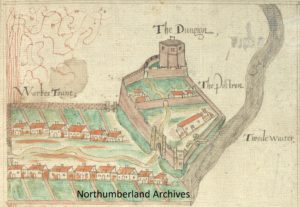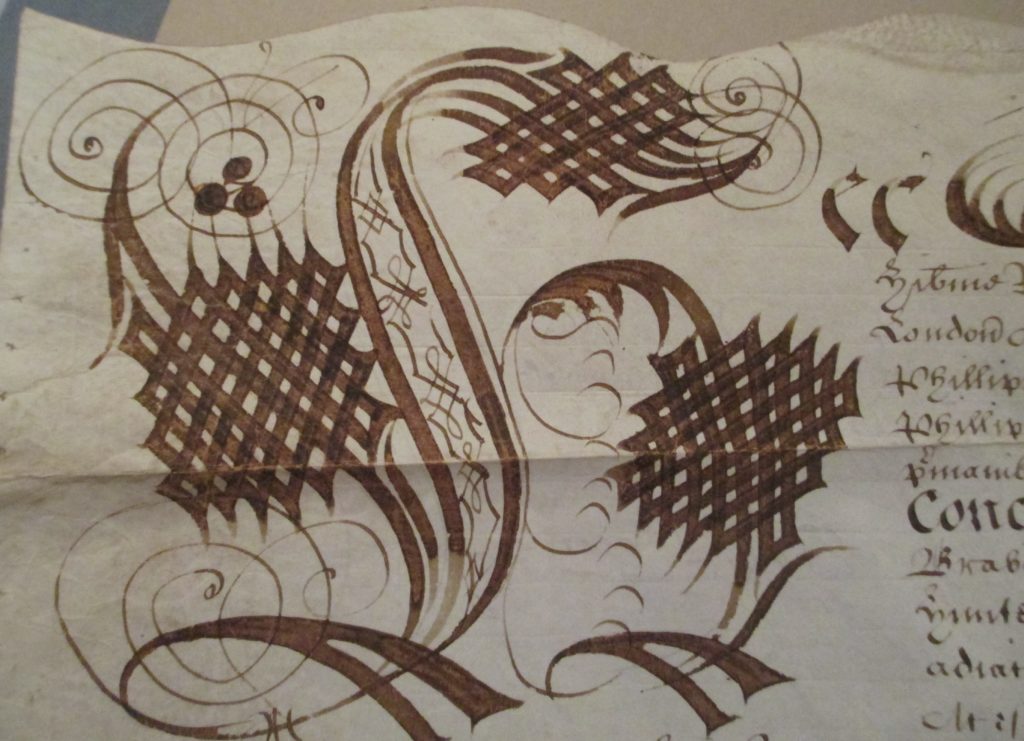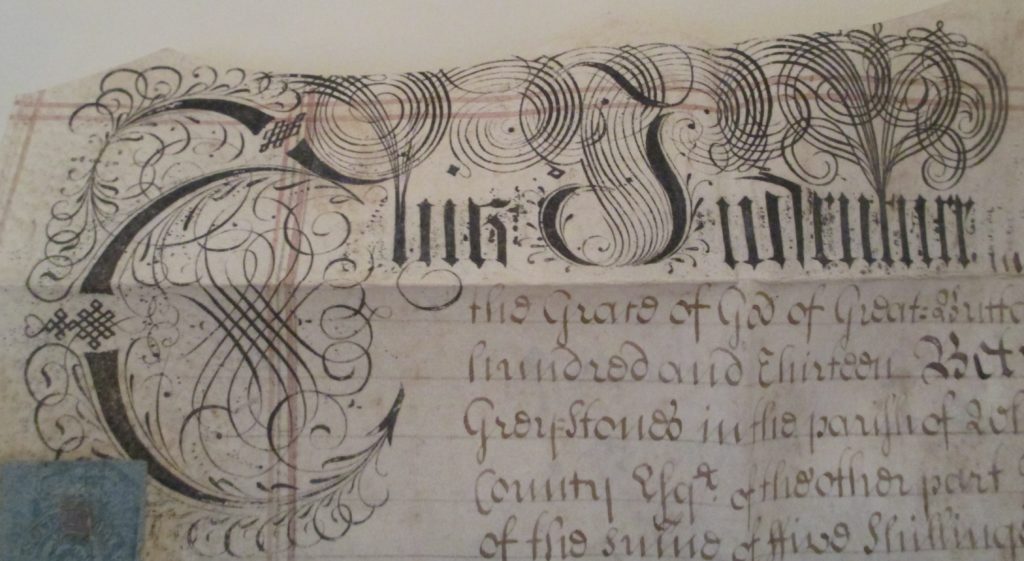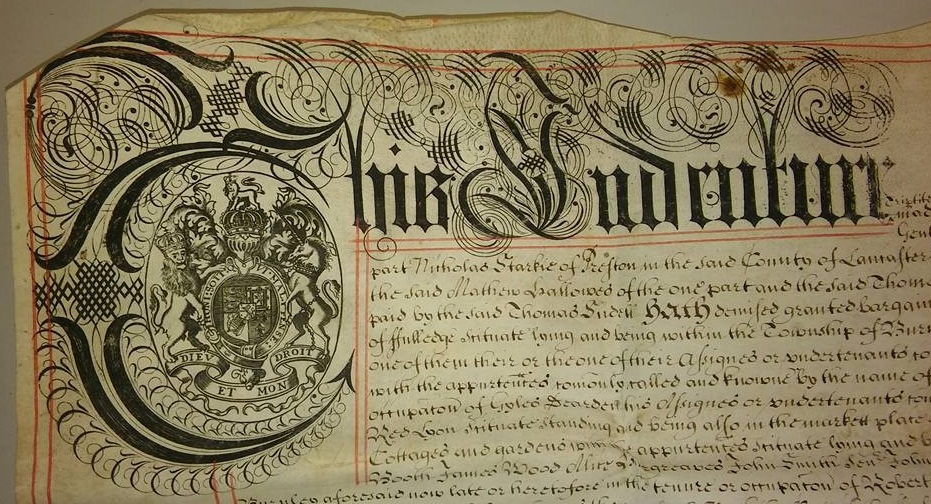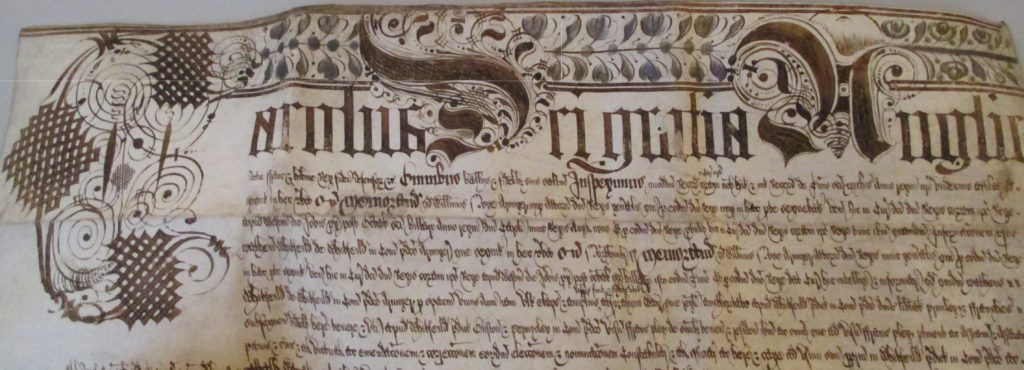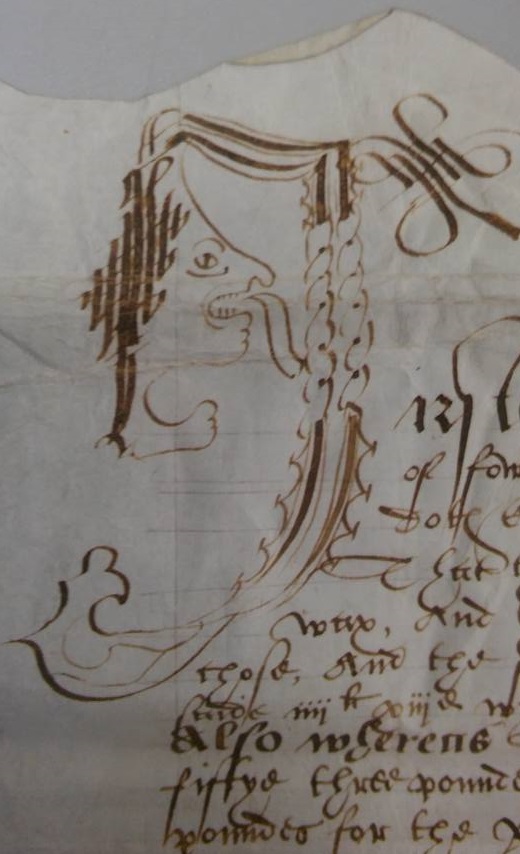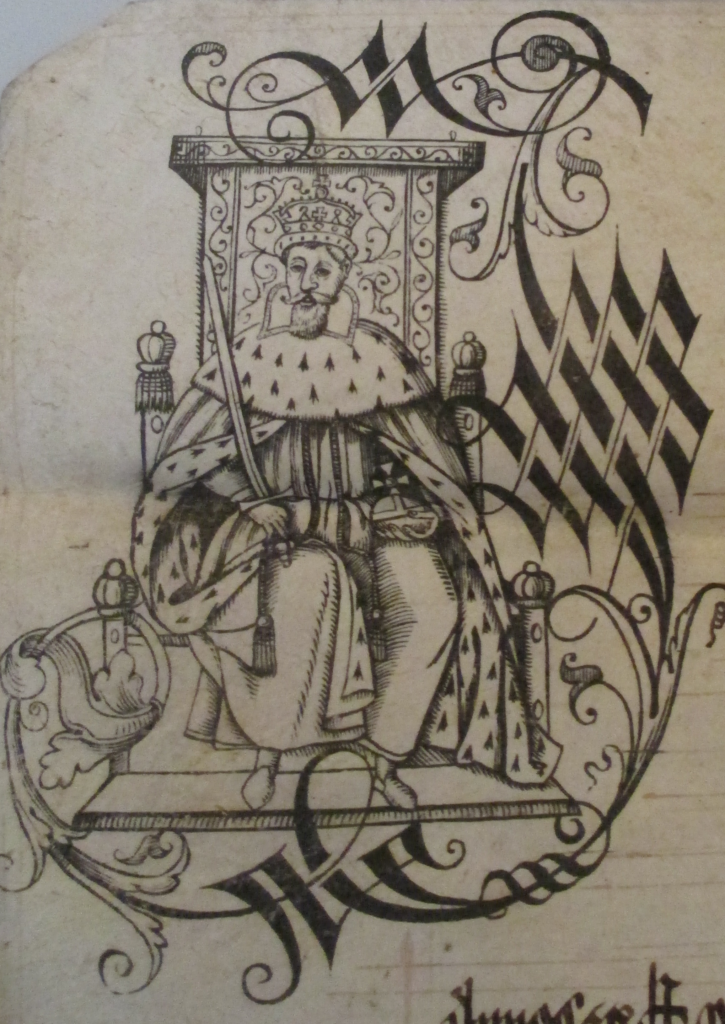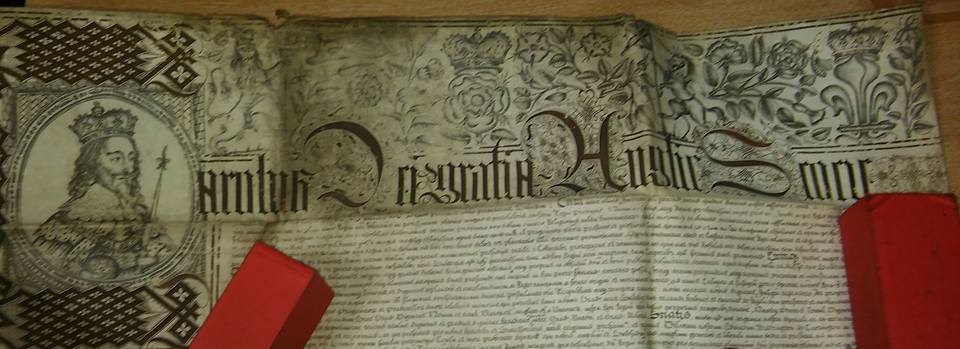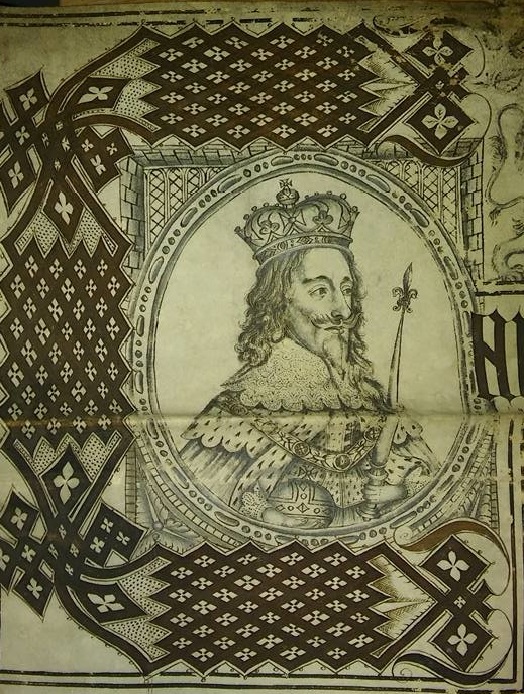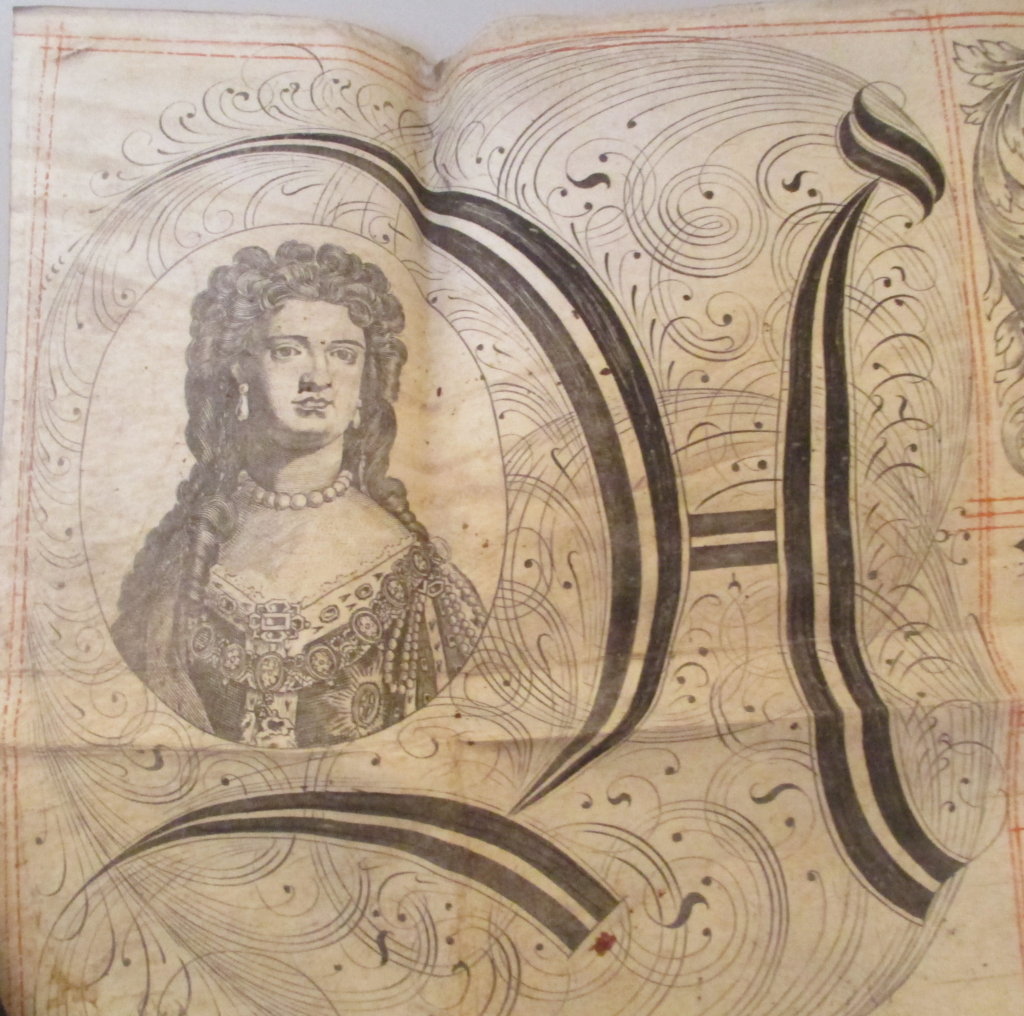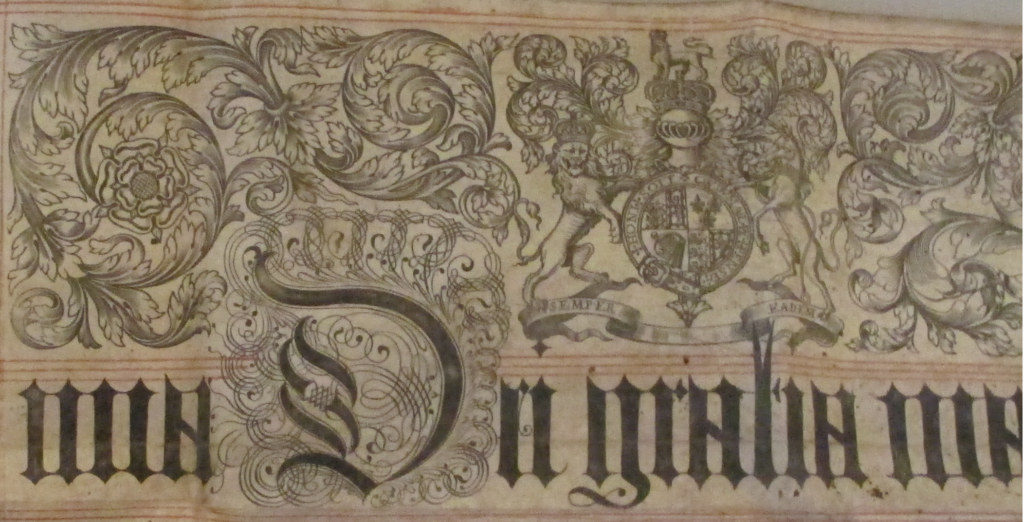Christmas as we understand it today has formed within the last two centuries, and is quite alien to the localised traditions of the medieval and Tudor periods. Though the religious importance of the day was celebrated, everyday business often still carried on. Documents still had to be signed, assizes and courts held, and yes, unfortunately even rents had to be paid at Christmas. This marked one of the four financial quarters of the year. The financial New Year began on Lady Day (25th March), with Midsummer (24th June), Michaelmas (29th September) and Christmas (25th December) forming the quarters. Rents, tithes, charity and other payments could be due quarterly, half-yearly or annually on these or other specified religious days. For example in 1296 the tenantry of West Chirton township annually paid 3s at Martinmas and Whitsuntide for fine of court, 1s 3d cornage at Michaelmas, one mark every seven years at Easter and Christmas, and 3s 4d on St Barnabas’s day.
However rents were often paid in supplies, or items that were more like presents. In the compilation of our Manor Authority files we often come across these payments in kind, so here are some of the more seasonal gifts we have spotted. If you have come across any others we would love to know.

Peppercorns
These payments in kind were often made in edible commodities, such as the 11d., and a pound of pepper paid yearly by Robert Freman for land in Hadston. The services of tenants in Bywell were also worth £14 13s 3d and 4lbs of pepper.
Though pepper was an important commodity, we more commonly find payments of a single peppercorn. If you wished to give your son a house on one of your manors you needed some form of payment to be given to ensure you both had rights as landlord and tenant. Even a tiny sum ensured this, which gave birth to the ‘peppercorn rent’, where a property would be given in exchange for a single peppercorn annually. It was often used to provide family members with entitlement to property. John Salkeld, in his will in 1623, gave his new house at Rock to his son Thomas, who was required to pay ‘a peppercorn yearlie’ to his older brother John, the new owner of Rock. Thomas Forster rented a number of tithes and properties in Carham and Wark to his son for a peppercorn in 1711.
A peppercorn was paid by Elizabeth de Felton for part of ‘Thresterton’ (Thirston), and by Walter de Edlingham for an area of Edlingham. The request of a peppercorn was sometimes followed by ‘if demanded’, showing this was a symbolic gesture.
Hens
Unfree tenants often paid part of their rents through the year in crops, and this includes chickens. In Fenwick the eight bondmen paid sixteen hens to the lord of the manor, with the five cottars required to pay five hens. They also gave eggs at Easter. In Acklington a fowl (or a penny) was paid every Christmas by the bond tenants in addition to the rest of their rent, while the inhabitants of Thirston gave the Acklington park keeper a ‘wod henne’, to allow them to gather wood there through the year. In the sixteenth century Chatton’s bailiff also received a wood hen, allowing locals to take firewood from the lord’s wood, including an oak tree as a yule log. Free tenants in Thirston also paid a rent of hens and nuts at Christmas in the fourteenth century. In 1717 a description of Edward Riddell’s estate described the East Farm in Great Swinburne as let to four tenants for £95, a goose and a hen each year. Unfortunately the estate register does not say what time of year this was paid, but perhaps this was Edward’s Christmas goose.
Spices
Though spices have become closely connected to our traditional Christmas cooking, they have been an important commodity for longer than you think. In around 1280 Gilbert de Withill purchased land at Dunstan and was required to pay the overlord a pound of ‘cummin’ annually at Alnwick fair. Isoud and Aviz the widow held 12 acres in Felton for a pound of cumin, and this continued to the rent for this land later, likely in fealty to Mitford Castle. A pound of Cinnamon was paid, fittingly, by ‘William the cook’ for the two bovates of land he held in Belford. Heaton manor was held at different times for a payment of a sparrowhawk, or a rose, but after the land and the manor were divided into separate moieties Robert of Ryal paid Margery of Trewick a pound of cumin for land there and a root of ginger for the manor.
A festive feast
In return for his land Liulf of Middleton Hall was required to give four ‘waitinges’ yearly in 1154 to his lord Patrick I earl of Dunbar. Waitinges were where a leaseholder provided the lord and his household with hospitality, usually on feast days.
Robes
Though not quite a Christmas jumper, Titlington was granted for one robe at Christmas with 100 shillings and four quarters of corn and barley. Robes were also received at Christmas by the foresters of Rothbury Forest in addition to their wages.
We hope to put up more of these unusual rent payments that we have found soon, let us know if you have come across any. All of the above were sourced from the Northumberland County Histories series and Hodgson’s History of Northumberland, which are invaluable sources to our manorial research.

